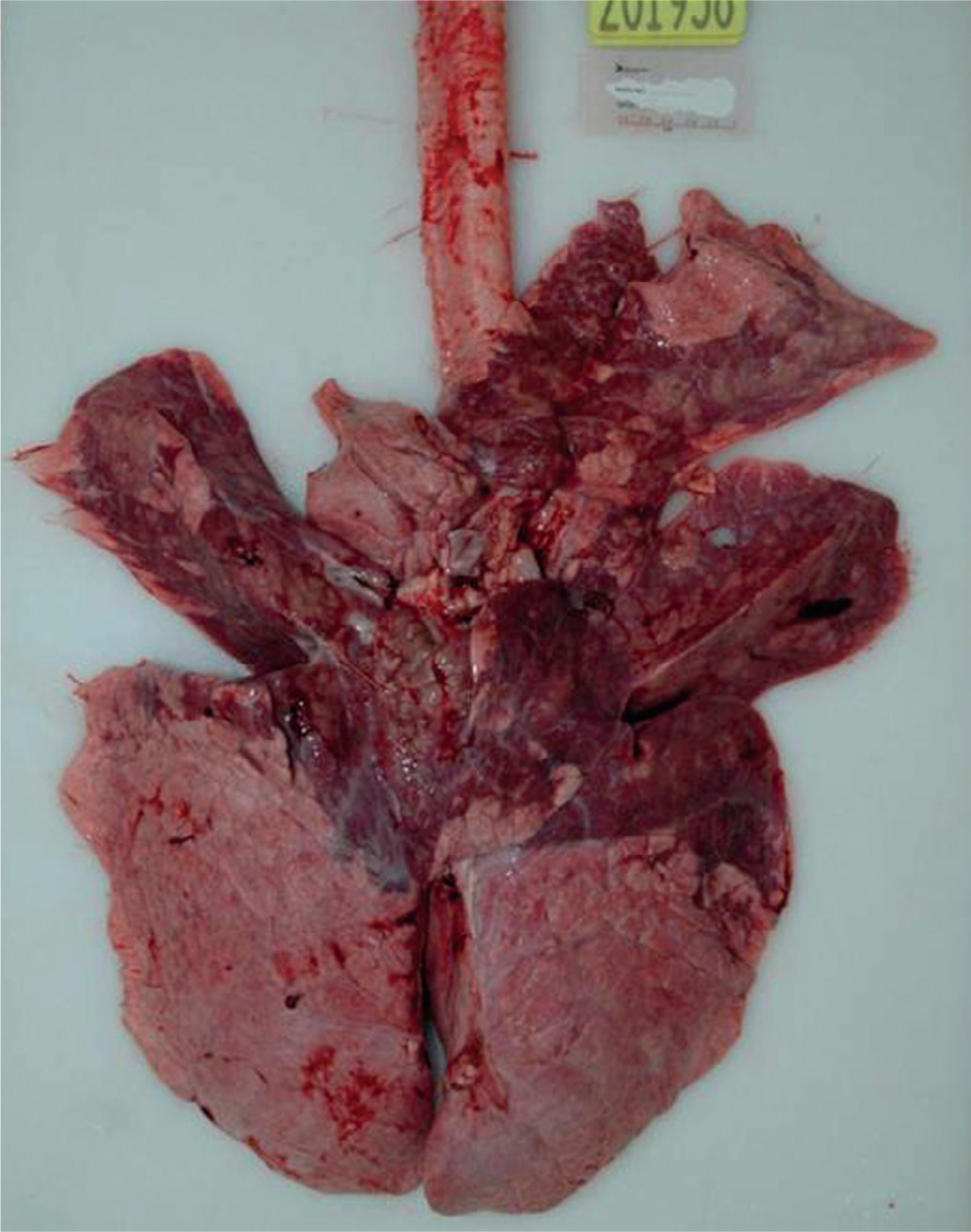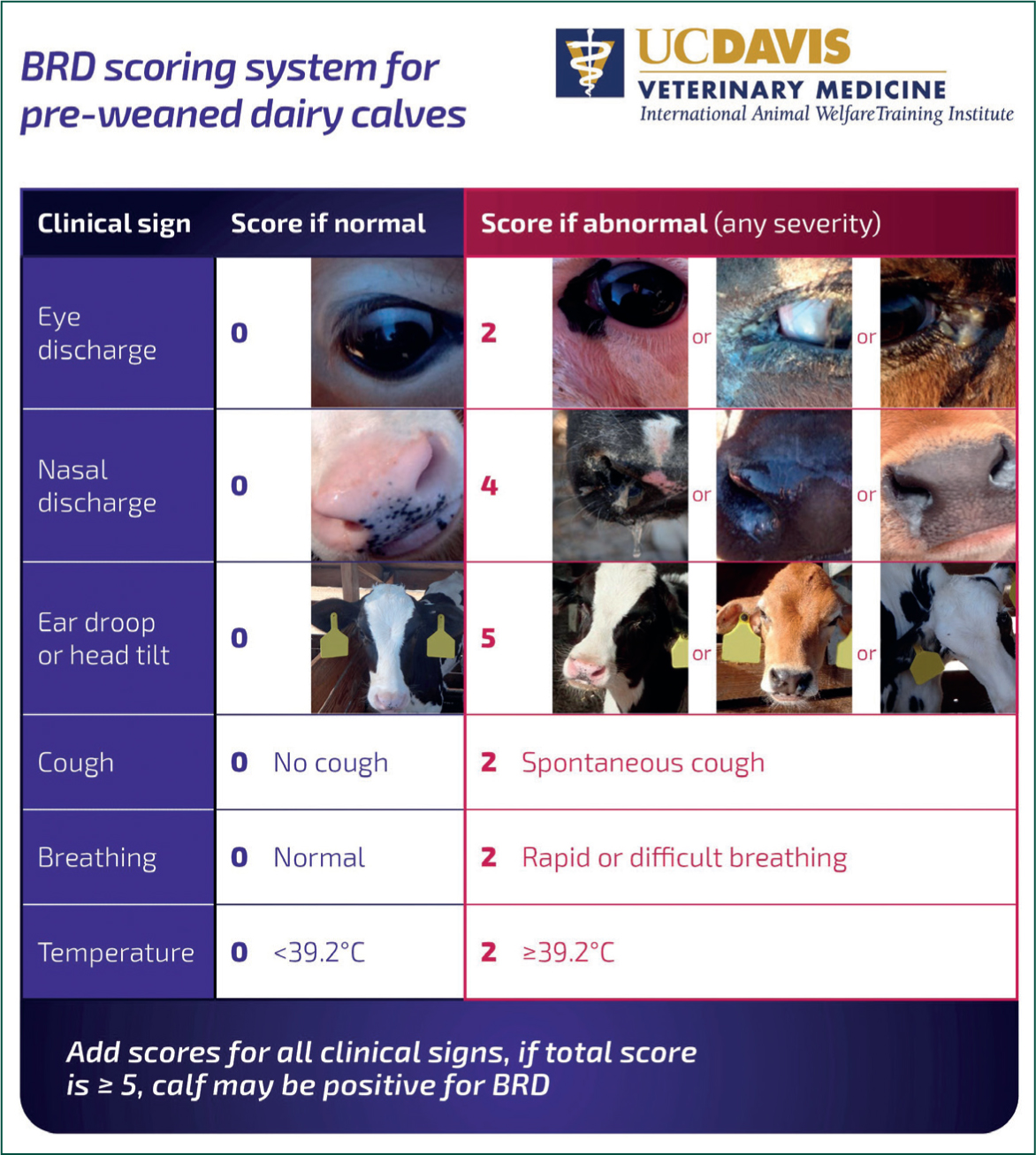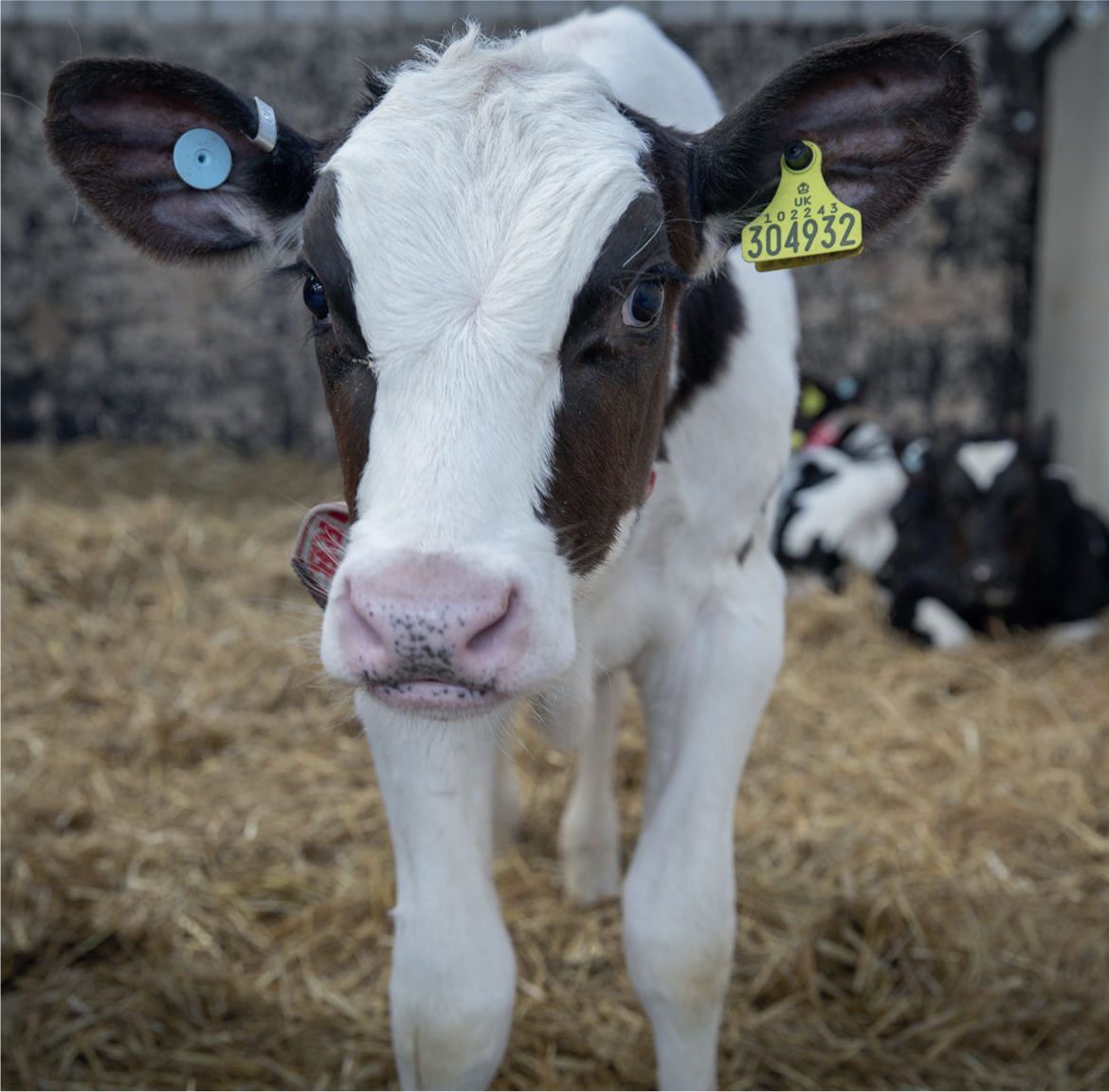Bovine respiratory disease (BRD) is a complex syndrome caused by multiple factors, including environmental and management-related stressors and a long list of viral and bacterial pathogens. In combination, these factors overwhelm and dysregulate host immunity and lead to disease. BRD is a leading cause of preweaning mortality in dairy calves and the financial costs are well documented. Overall cost of calfhood BRD is reflected in both the immediate cost of treating the disease as well as the lifetime decrease in production and increased likelihood of affected cattle leaving the herd before their second calving. Taking into account the initial cost of treatment, delay in first calving, reduction in first and second lactation milk yield and increased risk of culling, Bartram et al (2017) estimated the lifetime economic cost of a case of BRD in a dairy heifer to be £772, thus highlighting the potential returns from investing in reducing the impact of this disease.
In BRD, the bacteria themselves do not cause illness but do so by triggering a host response. If we consider the varying clinical picture often observed, some aspects result directly from changes in the lung itself, while others arise from the systemic effects of the infection. In the infected lung, ventilation and gas exchange is impeded by the bronchiolar and alveolar airspaces filling with oedema, neutrophils, and fibrin. Ventilation of the lung is further compromised by the effects of inflammatory mediators. The inflammatory mediators cause vasodilation which can bring about ventilation-perfusion mismatching; as well as causing bronchoconstriction and oedema within the walls of the airways. All of these changes lead to lung dysfunction and the clinical signs of tachypnoea and respiratory distress. However, because of their functional reserve cattle can appear clinically healthy even when greater than 30% of the lung is rendered non-functional by pneumonia (Bassel, 2020).
The other clinical signs often observed in animals with BRD (fever and loss of appetite) are not a direct consequence of the lung lesions, instead they occur as a result of sepsis in which cytokines and other inflammatory mediators produced at the site of lung infection have body-wide effects. So, given the potential impact to the lung as well as the potential systemic effects why do we see such variation in the clinical picture across a group of animals? Challenge studies have shown that different calves have differing sepsis responses to intravenous injection of lipopolysaccharide (Carroll et al, 2009; Plessers et al, 2015). Thus, it seems likely that different calves regulate their pulmonary and systemic inflammatory responses differently, and this is a possible explanation for individual variation in clinical signs (Bassel, 2020).
Early diagnosis
As for many diseases, the accurate and early diagnosis of BRD is a critical step in the implementation of effective therapeutics. The variability in how animals respond to the disease, along with cattle's tendency to mask signs of sickness (Weary et al, 2009), present a diagnostic challenge for farmers often resulting in delays in identifying animals requiring treatment. Studies in abattoirs have shown high incidence of lung lesions in animals with no history of being identified as having had, or being treated for, respiratory disease. Wittum et al (1996) identified lung lesions at slaughter in 37% of animals with no recorded history of respiratory disease, and more recently Williams et al (2016) surveyed veal calves at slaughter identifying moderate to severe lung lesions in 35% of animals surveyed, with 64% of those having no recorded treatments for BRD (Figure 1). Both studies highlight the potential scope for improving diagnosis on farm, and this has been an area of significant research focus.

Scoring systems
Building on the traditional visual approach to BRD diagnosis systematic scoring systems such as the Wisconsin Calf Health Score (McGuirk, 2008) and the California Health Score (Love et al, 2014) have been increasingly used by farmers and veterinary surgeons to screen calves for active pneumonia and monitor respiratory health at a group level. The California Health Score, developed by UC-Davis scoring, assesses six clinical signs. When present, a specific number of points are assigned for each sign. A total score of 5 or higher classifies an individual as a BRD case (Figure 2). One of the advantages of this system is that a rectal temperature is not needed to be collected for every calf; therefore, reducing the need for handling. Rectal temperature is only needed if the total score for the visible signs is 4.

While scoring systems are useful tools for providing a snapshot of disease prevalence at the time of scoring and are a useful means of standardising disease identification on farm, they are limited by the frequency of their use (Figure 3). Mahendran et al (2017a) highlighted the limitations of weekly scoring and pointed to the need for more frequent scoring or the use of continuous monitoring technology to reduce mortality on farms with high disease incidence rates. Technology is beginning to be implemented as a means of speeding up the detection of BRD on farm. Thermometry has been one area of particular focus with both direct monitoring devices (e.g. reticulo-ruminal boluses and eartags) and remote devices (e.g. infrared thermography) being now commercially available.

Treatment regimens
Antimicrobials remain the mainstay of most treatment regimens for BRD and in around 82% of cases there is positive response to this treatment (USDA-APHIS, 2013). This success rate falls rapidly if animals require subsequent treatments; of the cattle that receive a third treatment for BRD, 37.9% respond favourably to the treatment highlighting the need to achieve early treatment success.
The combination of an non-steroidal anti-inflammatory drug (NSAID) with an antimicrobial for treatment of BRD has become a common practice in bovine medicine (Francoz, 2012), with the aim of their use being the provision of analgesia, the reduction of pyrexia and management of inflammation. NSAIDs act by inhibiting the cyclooxygenase (COX) enzyme. Cyclooxygenase has two isoforms: COX-1 and COX-2. COX-1 is expressed constantly and is found in almost all cells in the body. Primarily involved in the homeostasis of gut, kidney and tissue functions, COX-1 is generally considered beneficial to the body. COX-2 is primarily induced by inflammation and causes an increased production of inflammatory mediators such as prostaglandin. COX-2 is also involved in thermoregulation and the pain response to injury. Central COX inhibition by NSAIDs in the hypothalamus is responsible for their antipyretic and analgesic actions (Dolan and Nolan, 1999). As NSAIDs specifically target the enzyme responsible for producing the pathological prostaglandins, their analgesic and anti-inflammatory effect can be superior to that of steroids, which act at a higher level within the inflammatory cascade.
In a systematic review of the available literature on the use of NSAIDs in BRD management, Francoz et al (2012) found that there was a consistently faster reduction in rectal temperature when NSAIDs were used alongside antimicrobials and that the use of a NSAID may decrease lung lesions at slaughter (Friton, 2005). Further work is required to enable a firm conclusion on the effect of NSAID use on the productivity of treated animals and therefore the overall cost-benefit of their use; however, the initial significant effects of NSAIDs justifies their use from an animal welfare perspective (Francoz, 2012).
With the continued pressure to reduce the use of antimicrobials on farm, there is a desire of alternative treatment protocols for BRD. One potential approach has been the use of NSAIDs alone in the early stages of disease. There is some evidence that inflammation in the respiratory tract of healthy calves increases the risk of later developing respiratory disease (Bassel, 2020), and that by reducing this inflammation in the very early risk period before the infection becomes established it is possible reduce the likelihood of disease. Malazdrewich (2004) showed that prior treatment with dexamethasone protected against subsequent Mannheimia haemolytica challenge in healthy calves, with lower clinical disease scores and extent of lung consolidation. Similarly, administration of meloxicam significantly reduced the prevalence of respiratory disease after beef calves arrived to a feedlot and were castrated (Coetzee, 2012) (although it is not clear if this disease sparing resulted from an anti-inflammatory effect (Van Engen, 2016) or from pain reduction). It should be noted that these studies involve anti-inflammatory drug administration during the very early risk period before infection becomes established and it is unclear on how this point of intervention could be accurately identified in the field. Preliminary studies by Mahendran et al (2017b) utilised fever-tags to identify animals with early stages of BRD (based on pyrexia) for NSAID treatment alone and achieved clinical resolution in 25.7% of cases, demonstrating the potential for NSAIDs as a first-line therapy but highlighting the requirement for ongoing monitoring to enable follow-up treatments, with an antimicrobial treatment to be instigated as required.
Conclusion
Bovine respiratory disease has a significant impact on the long-term performance of dairy heifers. The economic costs of the disease reach far beyond the initial cost of treatment with the significant proportion being because of the negative impacts on production and survivability. Treatment success is determined by rapid identification of affected animals, and scoring systems and new technologies can be used to facilitate treatment. Once affected animals have been identified, it is important that appropriate therapeutics are rapidly administered. While antimicrobials remain the mainstay of treatment protocols the use of NSAIDs alongside them brings benefits to animal welfare, faster reduction in pyrexia and potentially a reduction in long-term lung damage.
KEY POINTS
- The pathology of bovine respiratory disease (BRD) is a result of local and systemic response to inflammatory mediators.
- BRD can cause significant mortality as well as long-term effects on production.
- Early detection and treatment are key, the use of scoring systems or more modern technology can facilitate this on farm.
- Non-steroidal anti-inflammatory drugs have analgesic, anti-inflammatory, and antipyretic actions that have benefits in the treatment of BRD, and are a justified part of treatment protocols.


